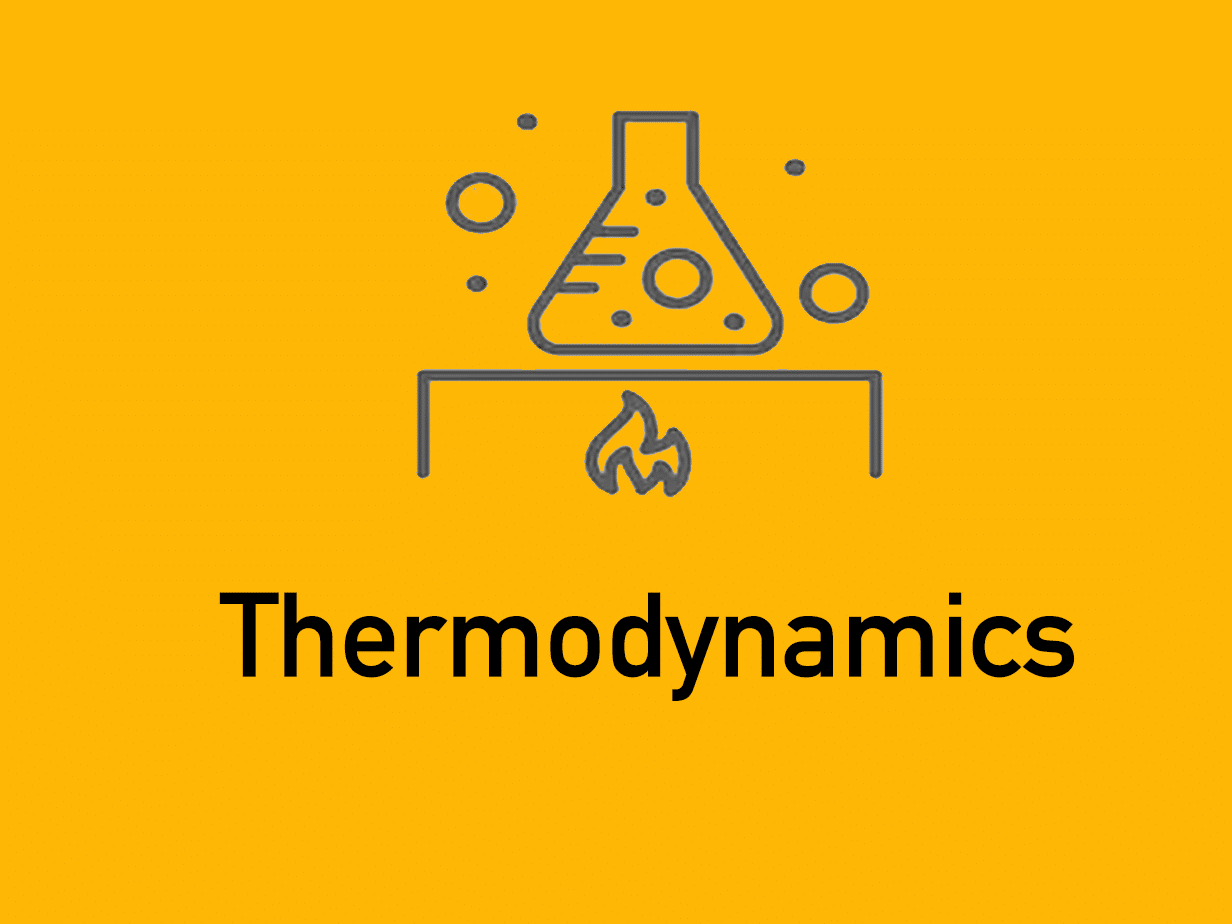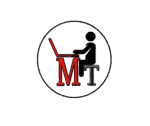Thermodynamics
Free

-
Index
- Introduction to Thermodynamics
- Zeroth Law
- First Law of Thermodynamics
- Energy and enthalpy
- First Law with Change In State
- Heat Transfer
- Work Transfer & Quasi Static Process
- Numerical on First law
- Steady Flow Equation
- Steady Flow Process And Application
- Second Law Of Thermodynamics
- Steady Flow Energy Equation With Solved Example
- Throttling Process
- PERPETUAL MOTION MACHINE1_2
- Clausius Inequality
- Diesel Cycle with Solved Example
- Dual Cycle with Solved Example
- Heat Engine Numerical With Solved Example
- JOULE THOMSON COEFFICIENT
- ENTROPY Numerical
- ENTROPY And Formulae
- Principal of Increasing Entropy
- OTTO Cycle With Solved Example
Thermodynamics
Objectives of the subject Thermodynamics to familiarize the concepts of Energy in general and Heat and Work in particular. To study the fundamentals of quantification and grade of energy.
To study the effect of energy transfer on properties of substances in the form of charts and diagrams. To familiarize application of the concepts of thermodynamics in vapour power, gas power cycles Outcomes of the subject Thermodynamics Learner will be able to Demonstrate application of the laws of thermodynamics to wide range of systems. Write steady flow energy equation for various flow and non-flow thermodynamic systems. Compute heat and work interactions in thermodynamics systems. Demonstrate the interrelations between thermodynamic functions to solve practical problems. Use steam table and mollier chart to compute thermodynamics interactions. Compute efficiencies of heat engines, power cycles etc.
Chapter Basic Concepts & definitions consists of the following subtopics Thermodynamics and its importance, Macroscopic and Microscopic view point, Concept of Continuum, Thermodynamic System, Surrounding and Boundary, Control Volume approach and Systems approach, Equilibrium Thermal ,Chemical, Mechanical and thermodynamic, Pure Substance, Property Intensive and Extensive, State, Path, Process and Cycle. Point Function and Path Function, Quasi Static Process and processes like Isobaric, Isochoric, Isothermal, Polytropic Process, Temperature and different scales, Zeroth Law of Thermodynamics, Energy, sources of energy; forms of energy, Energy transfer by work and forms of work ; free Expansion, Energy transfer by heat ; Adiabatic Process, Equations of state, Ideal gas Equation-; Specific gas constant and Universal Gas Constant.
Chapter First Law of Thermodynamics consists of the following subtopics Relation between Heat and Work- Joules Constant, First law of thermodynamics for a cyclic process, First law of thermodynamics for a closed system undergoing a process, Conservation principle, First Law of Thermodynamics applied to open system Steady Flow Energy Equation, Perpetual motion Machine of First kind, Application of first law of thermodynamics to closed system or Non flow Process, Application of first law of thermodynamics to Open Systems like Steam Nozzle, Boiler, Steam Turbine, Pump, Heat Exchanger, Throttling Process Joules Thompson Coefficient and its significance. Chapter Second Law of Thermodynamics consists of the following subtopics Limitation of first law of thermodynamics, Thermal Reservoir – Source and Sink, Concept of Heat Engine, Heat Pump and Refrigerator, Second law of thermodynamics – Kelvin Planck and Clausius Statements. Equivalence of Clausius and Kelvin Planck Statement, Reversible and Irreversible Process. Causes of Irreversibility, Perpetual Motion Machine of Second Kind, Need of Carnot theorem and its corollaries, Carnot cycle, Thermodynamic Temperature Scale and its equivalence with Ideal Gas Scale Entropy: Clausius Inequality, Clausius Theorem, Entropy is Property of a system, Isentropic Process, Temperature Entropy Plot and its relationship with heat interactions, Entropy Principle, Entropy change During a Process. Interpretation of concept of entropy.
Chapter Thermodynamic Relations consists of the following subtopics Reciprocal Relation, Cyclic Relation Property relations, Maxwell Relations, TdS equations, Heat capacity relations, Volume Expansivity, Isothermal Compressibility, Clausius Clapeyron Equation Availability: High grade and Low Grade Energy, Available and Unavailable Energy, Dead State, Available energy with respect to a process and a cycle, Decrease of Available Energy When heat is transferred through a finite temperature Difference, Second Law efficiency Properties of Pure Substance: Pure substance and Phase changes: Phase change processes of pure substance, Property diagrams for phase change process (T-v, T-s and p-h diagrams), Understanding of Steam Table and Mollier chart with suitable examples. Chapter Compressors consists of the following subtopics Reciprocating Air Compressor, Single stage compressor – computation of work done, isothermal efficiency, effect of clearance volume, volumetric efficiency, Free air delivery, Theoretical and actual indicator diagram, Multistage compressors – Constructional details of multistage compressors, Need of multistage, Computation of work done, Volumetric efficiency, Condition for maximum efficiency, Inter cooling and after cooling (numerical), Theoretical and actual indicator diagram for multi stage compressors Rotary Air Compressors- Classification, Difference between compressors and blowers, Working and constructional details of roots blower, Screw type and vane type compressors. Chapter Vapour Power cycle consists of the following subtopics Carnot cycle and its limitations as a vapour cycle, Rankine cycle with different turbine inlet conditions, Mean temperature of heat addition, Methods to improve thermal efficiency of Rankine cycle – Reheat cycle and Regeneration Cycle. Gas Power cycles: Assumptions of Air Standard Cycle, Otto cycle, Diesel Cycle and Dual cycle, Brayton Cycle, Sterling Cycle and Ericsson Cycle and Lenoir cycle and Atkinson cycle.
Suggested References books for the subject Thermodynamics by Mumbai University are as follows Thermodynamics: An Engineering Approach by Yunus A. Cengel and Michael ABoles, 7thedition, TMH. Basic Engineering Thermodynamics by Rayner Joel, Longman Publishers Engineering. Engineering Thermodynamics by P Chattopadhyay, 2nd edition, Oxford University Press India. Thermodynamics by P K Nag, 5 th edition, TMH 5. Thermodynamics by Onkar Singh, New Age International. Thermodynamics by C P Arora, TMH. Engineering Thermodynamics through Examples by Y V C Rao, Universities Press (India) Pvt Ltd. Fundamentals of Thermodynamics by Moran & Shapir. Fundamentals of Classical Thermodynamics by Van Wylen G.H. & Sonntag R.E., JohnWiley & Sons. Thermodynamics by W.C. Reynolds, McGraw-Hill & Co 11. Thermodynamics by J P Holman, McGraw-Hill & Co.
Prepare For Your Placements: https://lastmomenttuitions.com/courses/placement-preparation/
![]()
/ Youtube Channel: https://www.youtube.com/channel/UCGFNZxMqKLsqWERX_N2f08Q
Follow For Latest Updates, Study Tips & More Content!
Course Features
- Lectures 23
- Quizzes 0
- Duration 50 hours
- Skill level All levels
- Language English
- Students 668
- Certificate No
- Assessments Yes

1 Comment
Wah